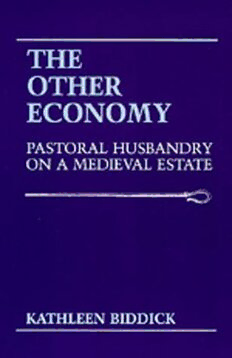
The Other Economy: Pastoral Husbandry on a Medieval Estate PDF
01989·0.761 MB·English
Most books are stored in the elastic cloud where traffic is expensive. For this reason, we have a limit on daily download.
Preview The Other Economy: Pastoral Husbandry on a Medieval Estate
Description:
While the cereal agriculture of medieval Europe has been studied exhaustively, the pastoral resources and livestock husbandry of medieval estates have been seriously neglected. Kathleen Biddick's examination of one estate, Peterborough Abbey, during several decades before and after 1100 and the first decade after 1300, brings a new balance to the subject of the medieval economy. Her pioneering methodology and the conclusions she reaches will interest archaeologists and agricultural historians as well as anthropologists, economists, and historians of early European development.Drawing on the archival records of the abbey, an estate that straddled the "classic" open-field agriculture of the English Midlands and the more pastorally-oriented farming of the English peat fens, Biddick describes in great detail how these farmers managed their herds and consumed and marketed livestock products such as meat, wool, hides, milk, and cheese. Commitment to conserving consumption strategies did not mean that the Abbey resisted market involvement and technological innovation. Large numbers of work and cart horses indicate the estate's economic interest in speedy haulage. Cereal yields, where they are calculable, compare favorably to the high-yielding demesnes of parts of Norfolk, the most agriculturally advanced region of medieval England. By showing how the Abbey coordinated its resources to enhance diversity and flexibility, The Other Economy enlarges our understanding of agrarian lordship and political control over resources in the medieval economy.
See more
The list of books you might like
Most books are stored in the elastic cloud where traffic is expensive. For this reason, we have a limit on daily download.
